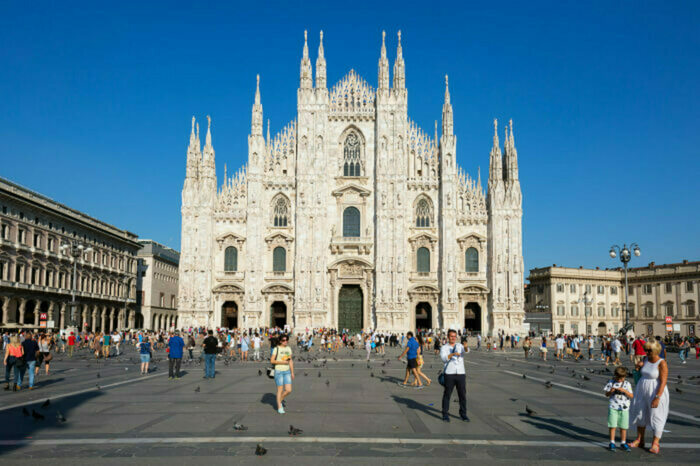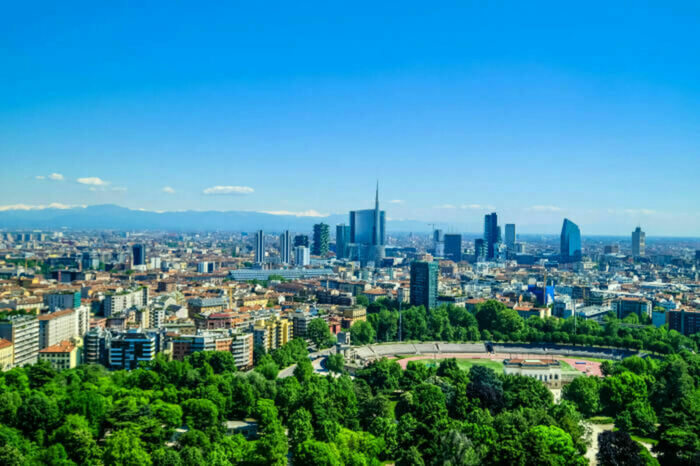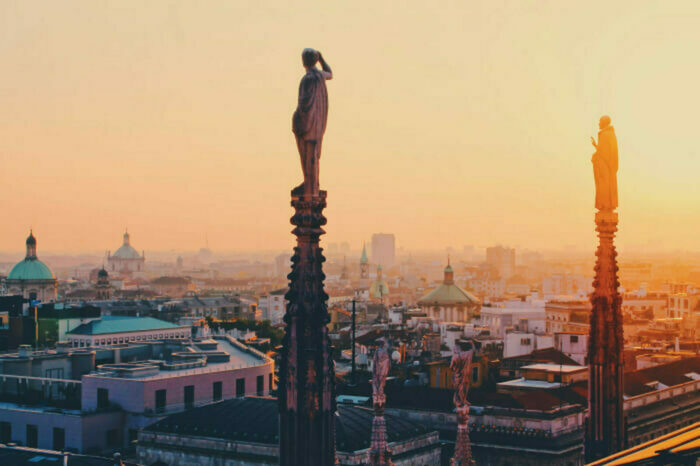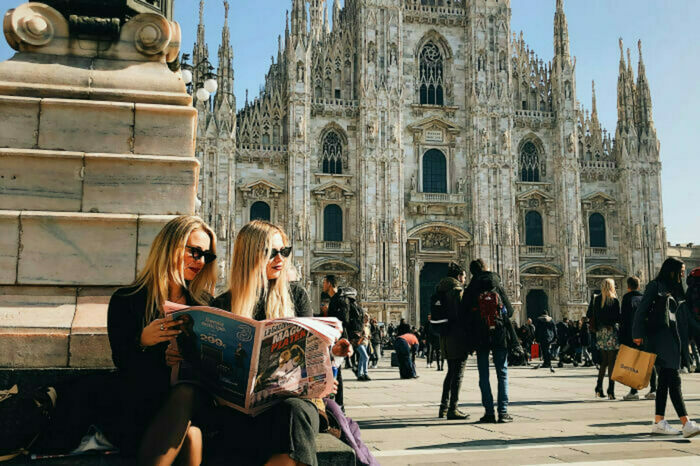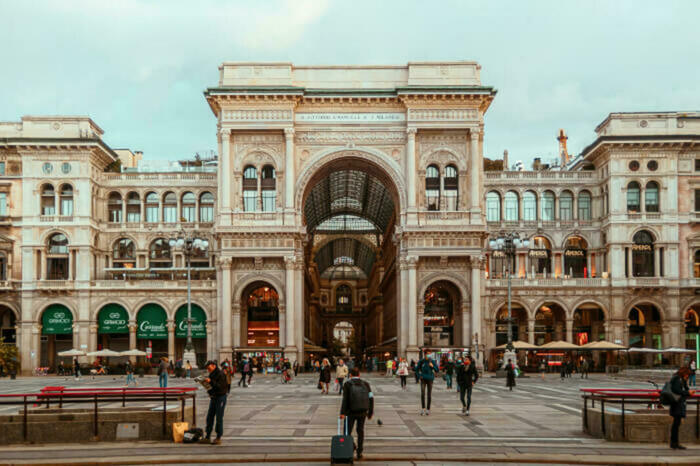Milan — attractions, photos & maps
Milan — the capital of fashion and design — impresses with cultural and historical landmarks. Every corner of the city carries the special vibrant energy of northern Italy: here commerce and new technologies blend with the heritage of the Renaissance and the aesthetics of earlier generations.
Sights and attractions in Milan: a concise review
Milan’s unmissable tourist spots are diverse: it appeals both to lovers of architecture and to savvy shoppers. We suggest a top list of X places to visit in Milan in 2024:
1. Duomo Cathedral
2. Galleria Vittorio Emanuele II
3. Sforza Castle
4. Church of San Maurizio
5. La Scala Theatre
6. Pinacoteca di Brera
7. Basilica of Sant'Ambrogio
8. Santa Maria delle Grazie Monastery
9. Piazza Mercanti
10. National Museum of Science and Technology Leonardo da Vinci
11. Triennale Museum
12. Museum of Fashion and Costume
13. Monumental Cemetery
14. Royal Palace of Milan
15. Navigli Canal
What is the city of Milan, the capital of Lombardy, known for? As you can see on the map of Italy, it is located in the northwest of the country, and its geographical position created a transport hub and a center of commercial business. Milan is renowned for its high economic level as well as its rich historical and cultural heritage. In addition, it is a famous center of fashion and design, where fashion shows take place and the headquarters of the most renowned brands are located, alongside festivals and contemporary art exhibitions. Let’s review the city’s most important tourist attractions, grouping them by core traveler interests. So, discover X places in Milan.
Churches and cathedrals in Milan
Milan Cathedral (Duomo di Milano)
The Duomo Cathedral in Milan is an excellent showcase of Gothic architecture that amazes with its size: up to 40,000 worshippers. The roof is adorned with 135 sculpted spires, the façade with 2,245 marble sculptures, and the fabulous stained glass windows are among the largest in the world! Its uniqueness is revealed not only by the lace-like marble façade but also by the stunning interior: in a semi-shadowed glow, one of the largest organs in Europe resounds; you can see graceful sculptures, richly decorated columns, and other works of art: the golden reliquary of Carlo Borromeo, the 13th-century bronze chandelier, and the 16th-century mausoleum of Gian Giacomo Medici.
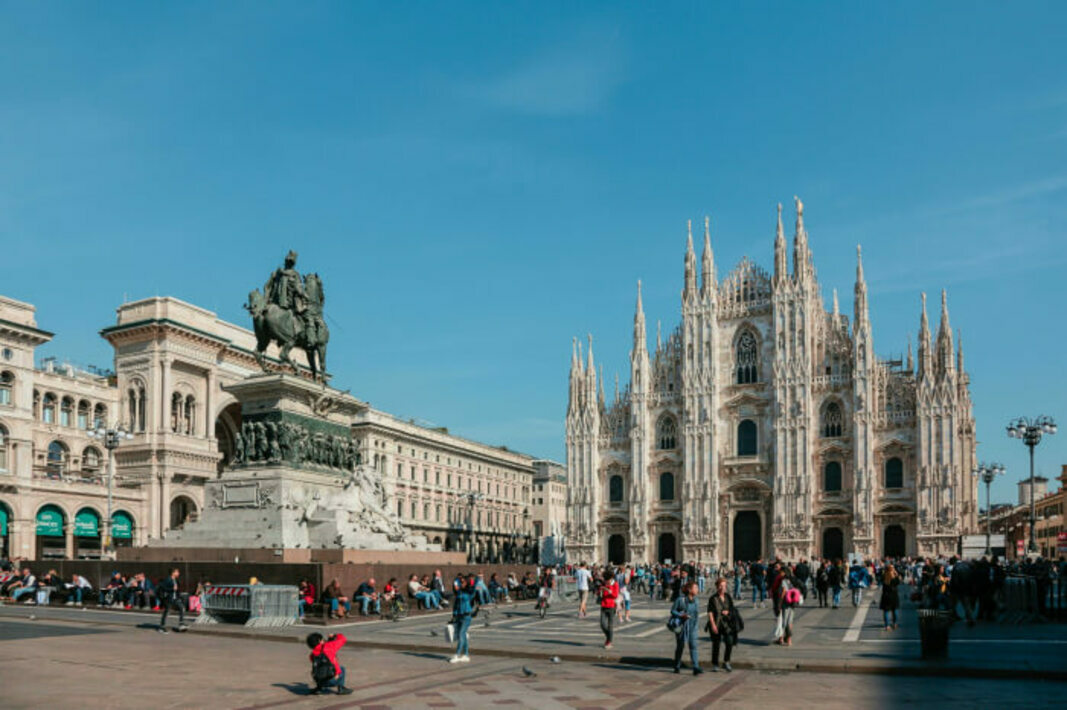
Church of San Maurizio in Milan
A hidden gem near the Duomo — the church of San Maurizio. Since the 8th century, on the ruins of the ancient amphitheater, there stood a nunnery. Benedictine nuns lived here for about ten centuries until the building became city property. In the 16th century, the monastery was rebuilt; walls and ceilings were painted with frescoes of Old Testament scenes by Leonardo da Vinci’s pupils. Since then, the Church of San Maurizio has been called the “Sistine Chapel of Milan.” It is not a typical Milanese cathedral — the building is divided into two parts: one for parishioners and one for nuns, and the interior captivates with its strict medieval look and a special palette: dark wooden details lit by the brilliance of frescoes and sun rays from semicircular windows. Outside, in the former monastery spaces, there is an Archaeology Museum that tells about Etruscan, Greek, and Roman cultures of ancient Mediolanum (the ancient name of Milan).
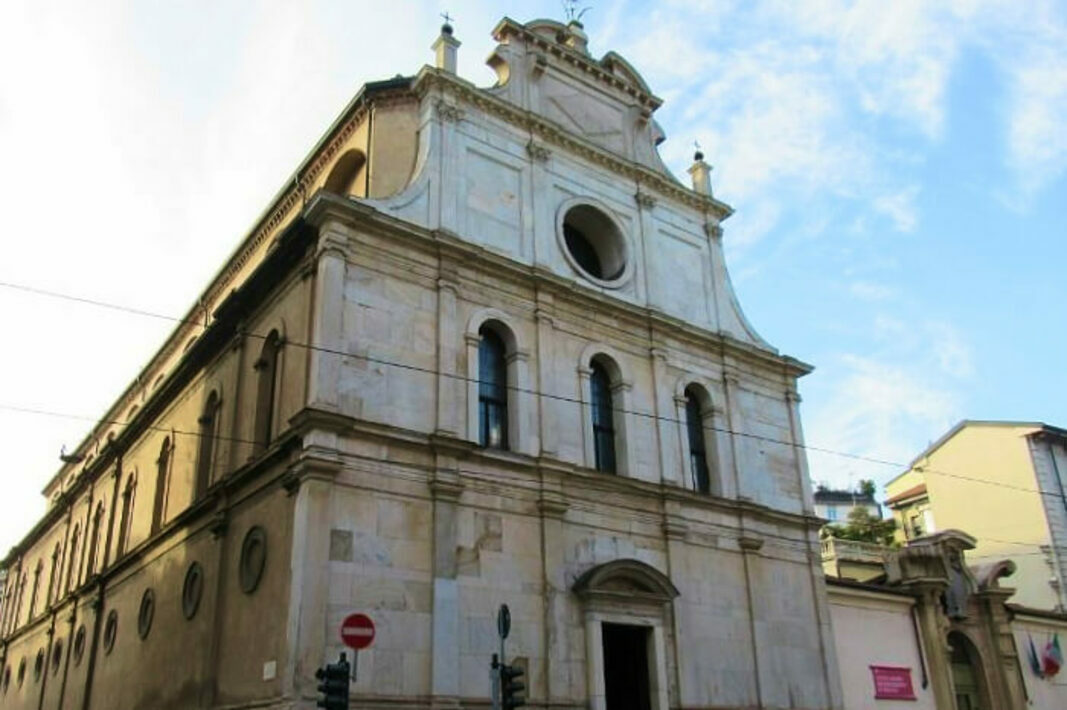
Basilica of Sant’Ambrogio
Which Milan landmarks attract pilgrims from around the world? What should you not miss? The Basilica of Saint Ambrose is one of the city’s most significant places: here lie the relics of the Christian patron — Ambrose of Milan. The church was built between 1080 and 1128 in the Romanesque style while preserving the layout of an early Christian church. It is one of the first Romanesque churches with cross vaults instead of wooden ceilings. Inside are unique mosaics and the “Golden Throne” — an altar covered with golden relief. The Chapel of San Vittore, built on the early 4th-century martyrs’ tombs and later joined to the church in the 11th century, is famed for the mosaic “Golden Stag,” one of the finest examples of early Christian art.
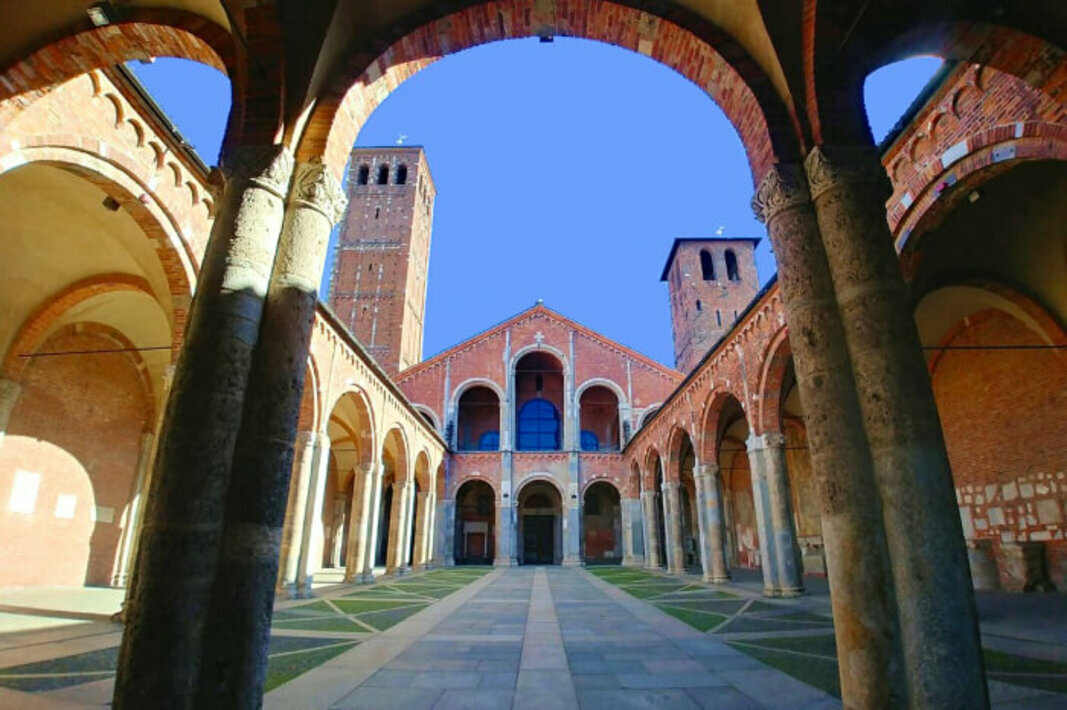
Church of Santa Maria delle Grazie
What should lovers of painting and admirers of Leonardo da Vinci visit in Milan? Santa Maria delle Grazie is the main church of the Dominican monastery in the western part of the city, built during the Renaissance. One of its treasures is the fresco “The Last Supper,” created by Leonardo between 1494 and 1498 in the refectory. In 1943, the church was destroyed by bombing, but Leonardo’s fresco miraculously survived. Today, “The Last Supper” is housed in a separate building belonging to the National Museum.
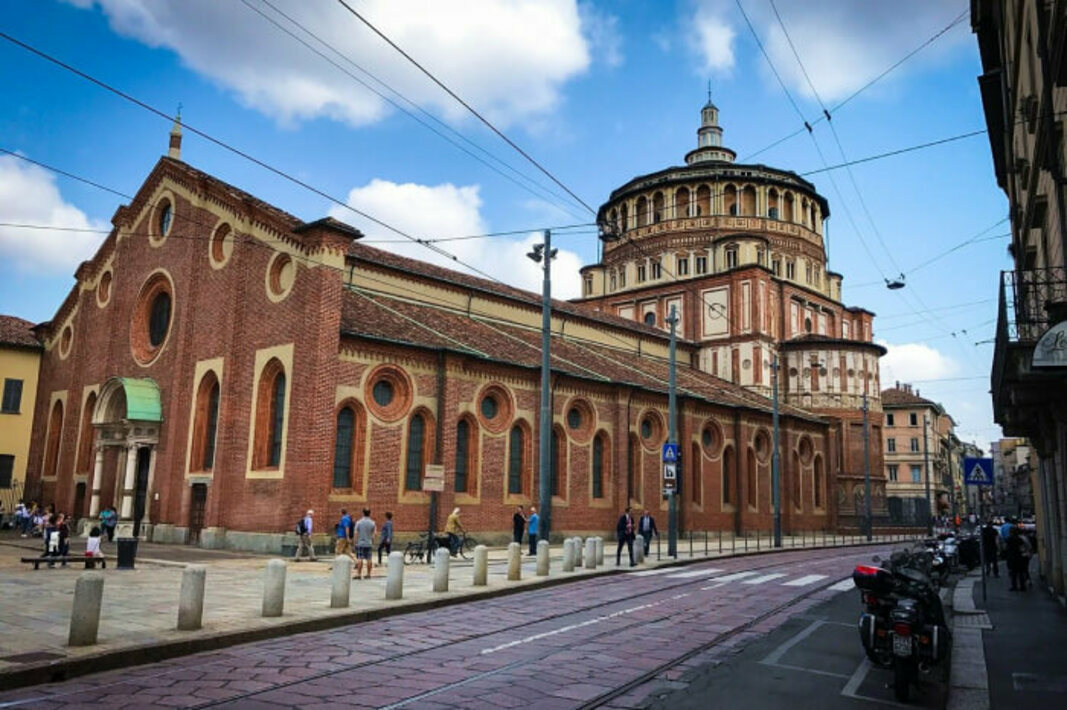
Cultural attractions in Milan
Sforza Castle
Milan excursions include a visit to Sforza Castle, rising majestically in the historic center. Built in the 15th century by Milan’s Duke Francesco Sforza, the castle became one of the city’s symbols and fascinates with monumentality and a rich history. Over the centuries, the building underwent many changes and reconstructions, including in the 16th and 19th centuries. Today, Castello Sforzesco houses several museums: Ancient Egypt, antiquities, musical instruments, tableware, and more. The standout is Michelangelo’s sculpture “Pietà Rondanini,” his final work.

La Scala Opera House
A cultural trip to Milan must include La Scala, built in 1776–1778 on the site of the former church Santa Maria alla Scala. The building is an excellent example of Neoclassicism but is foremost renowned for its impeccable acoustics. The auditorium seats over two thousand spectators and has five tiers of boxes and galleries. La Scala’s history intertwines with the works of Rossini, Puccini, and Verdi. Legendary singers have performed on its stage: Renata Tebaldi, José Carreras, Luciano Pavarotti, Maria Callas, and Anna Netrebko. Inside there is a museum preserving a collection of costumes from milestone productions and personal gifts of celebrated artists, including Verdi, Rossini, and Toscanini. A museum tour includes visiting the opera hall to truly absorb the atmosphere.
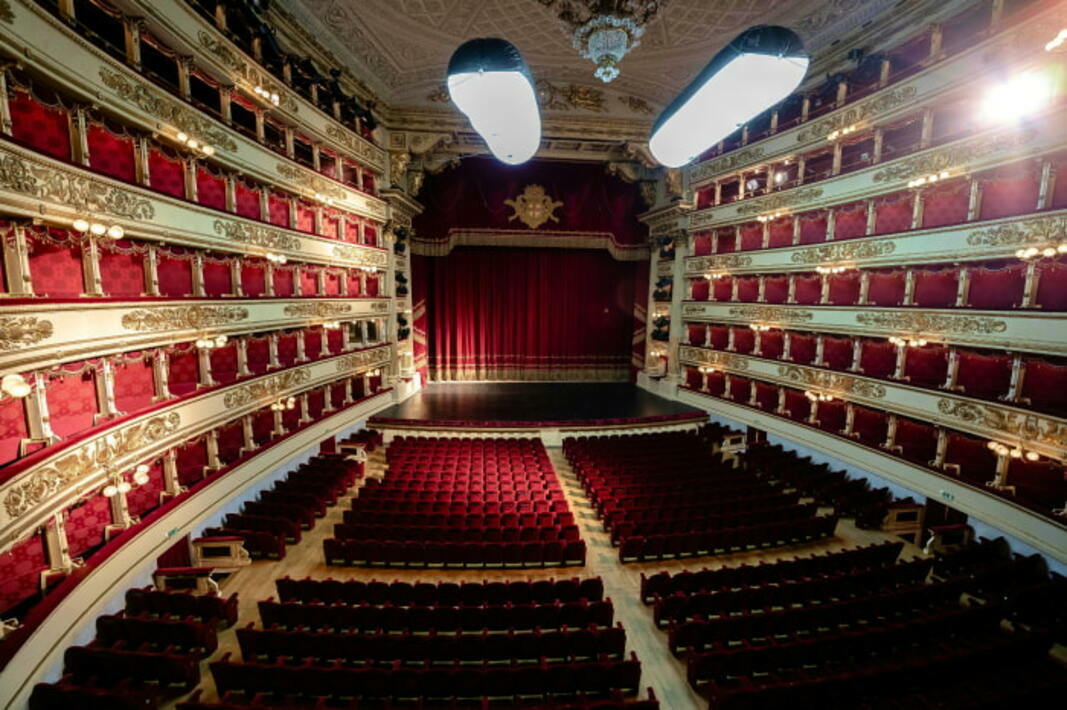
Monumental Cemetery
An unusual place when you ask what to do in Milan on a budget — the Monumental Cemetery (Cimitero Monumentale). It is an open-air arts park founded in 1866. Over time, it became a true museum where each grave is a work of art. Walking through, you’ll touch Milan’s history: unique monuments reflect social status (angel sculptures, varied sculptural compositions, even pyramids). Here rest famous composers, musicians, painters, and other notable figures.
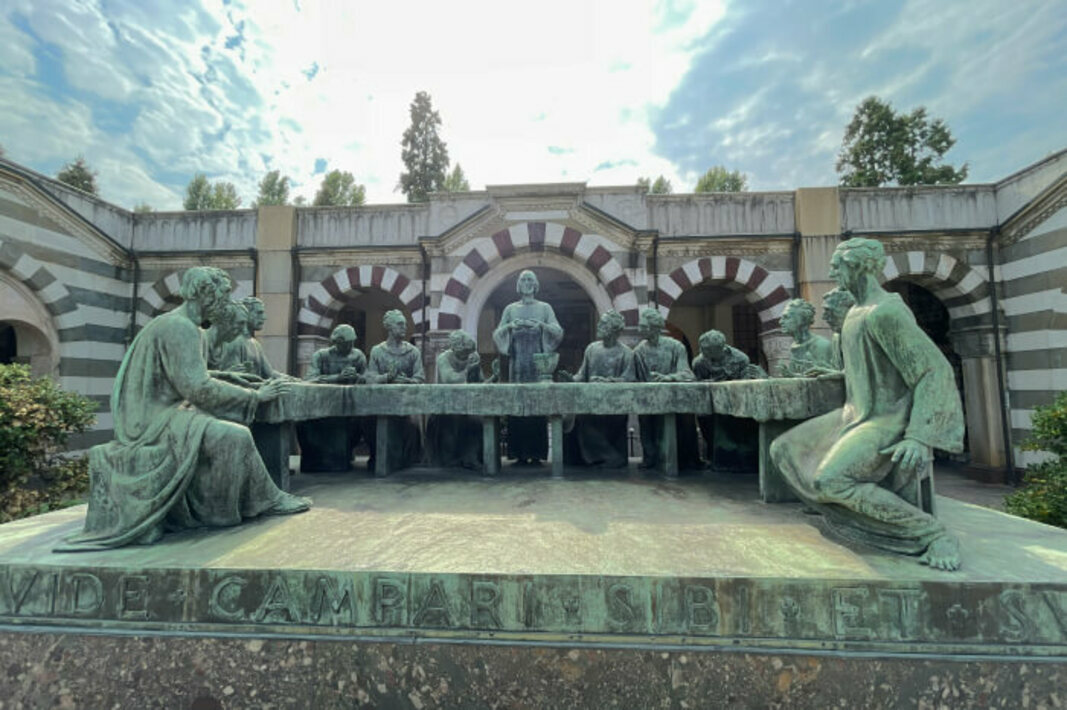
Royal Palace of Milan
Located on Piazza del Duomo in Milan’s historic center, the Royal Palace (Palazzo Reale di Milano) is a restrained building whose history began in the 12th century as a city hall. In the 15th century it was rebuilt and became the duke’s residence in the time of Francesco Sforza. The palace received its modern appearance under the Habsburgs and underwent several reconstructions, including post-WWII renovations. Today it is part of the city’s cultural and social life, hosting museums, art exhibitions, and events. It stands opposite Galleria Vittorio Emanuele II and is a popular tourist attraction.
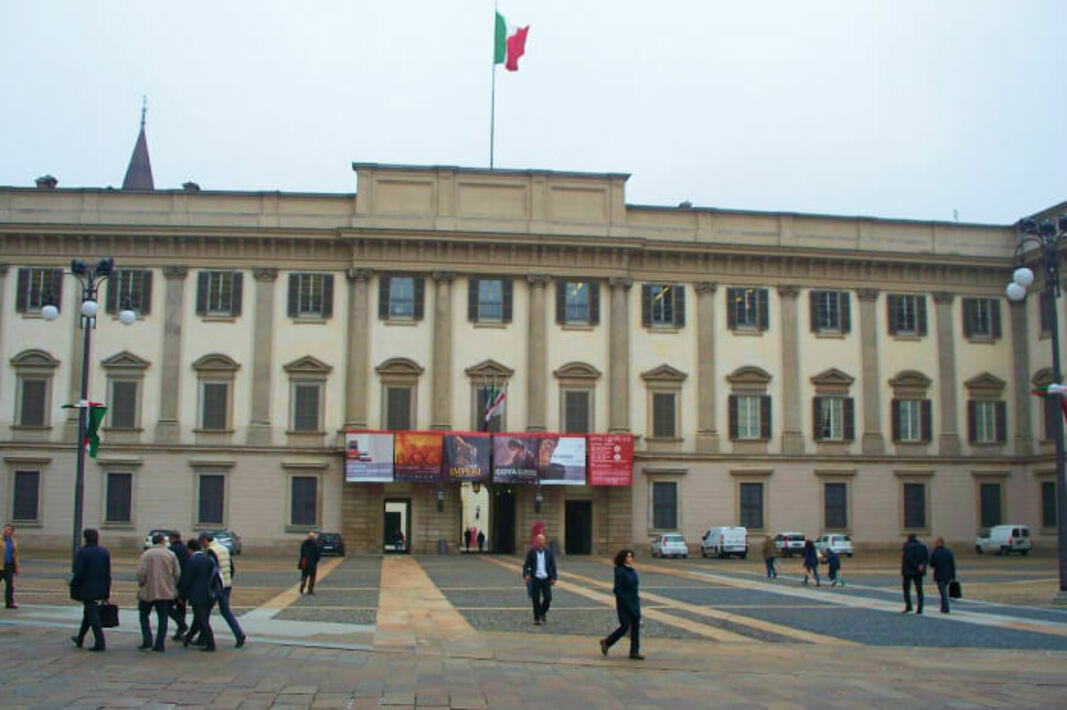
Piazza Mercanti
Piazza Mercanti is Milan’s oldest square, preserving a medieval atmosphere. Situated in the old city center, it attracts with a variety of architectural styles and remains one of the most distinctive tourist spots. Today you can see monuments from different eras: Palazzo della Ragione (Broletto Nuova), Casa Panigarola, the Palace of Legal Counselors, and Loggia degli Osii. Piazza Mercanti is perfect for strolls and photo sessions against an authentic urban backdrop.
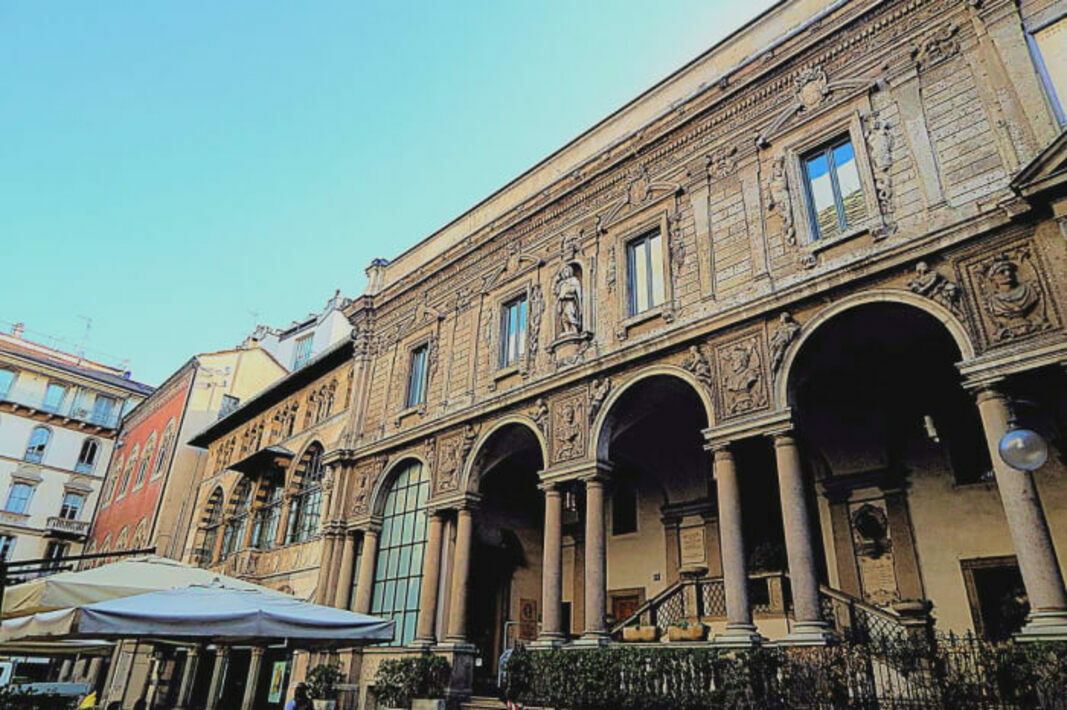
Navigli Canal
A distinctive Milan highlight — the Navigli Canal, a historic water route that gives the city a special charm. In the Middle Ages it was a key transport artery; today its banks are lined with cafés and restaurants where you can savor traditional Italian cuisine with lovely waterside views. A boat ride on the canal lets you see Lombardy’s capital from the water, appreciate buildings and bridges from a new angle, and soak up the city’s atmosphere.
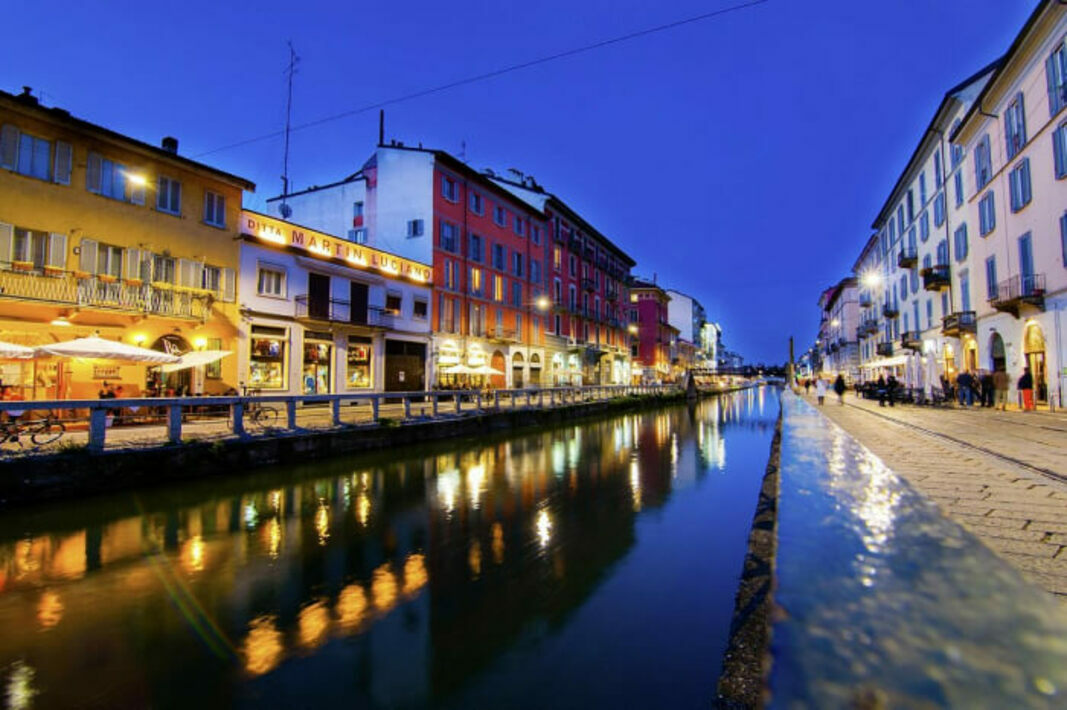
Main museums and galleries in Milan
Pinacoteca di Brera
The top location in Milan for painting lovers is the Pinacoteca di Brera — one of the largest art galleries in Europe, housed in a beautiful 17th-century palazzo. It was founded in the early 19th century with Napoleon Bonaparte’s support: many artworks from across Italy were gathered here. The collection gradually grew with paintings and sculptures from various eras, including works by Bramante, Raphael, Caravaggio, Titian, Tintoretto, and other Italian masters. The gallery comprises 38 rooms organized by painting schools (Venetian, Tuscan, Lombard). Of special significance is Raphael’s “Holy Family with the Angel.”

National Museum of Science and Technology Leonardo da Vinci
A great place to visit in Milan with kids — the Leonardo da Vinci Museum of Science and Technology. It is an educational space exhibiting inventions and achievements in science and engineering inspired by the legacy of Milan’s famous resident — Leonardo. The collection includes interactive exhibits, models, historical artifacts, and more, reflecting the great inventor’s contribution to various fields of knowledge, as well as projects by engineers and scientists.
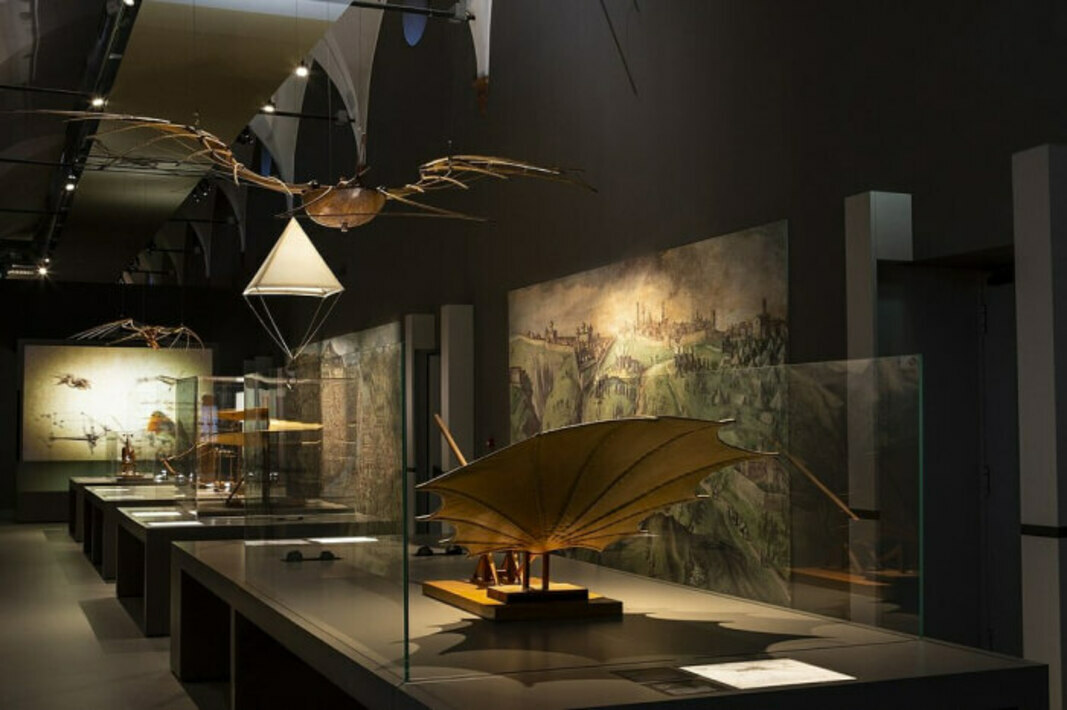
Triennale Museum
The Triennale is a relatively young museum of design and art in Milan’s Parco Sempione, housed in the historic Palazzo dell’Arte — a must-see for art lovers. It opened as a museum of modern design in 2007, and the name “Triennale” comes from the former frequency of large exhibitions — once every three years. The museum hosts visual art exhibitions and, since 2003, awards the Gold Medal for Italian Architecture. Triennale fits perfectly with the new concept of the Italian museum, where visitors don’t just observe but actively interact with the displays.
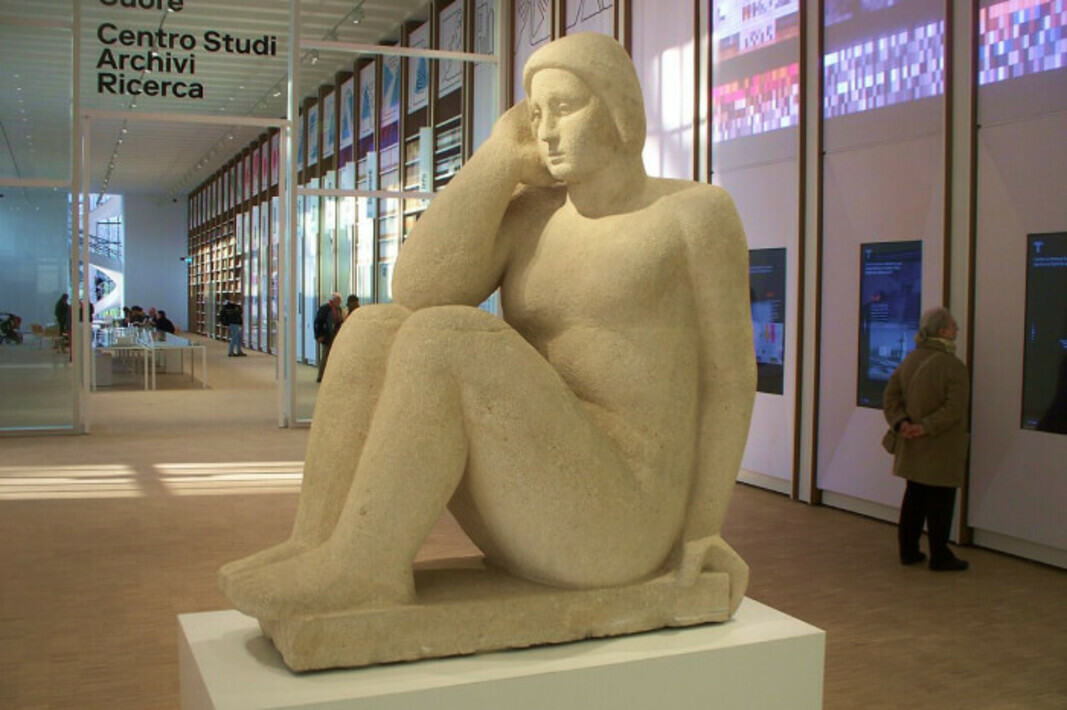
Museum of Fashion and Costume in Milan
A Milan attraction — the Museum of Fashion and Costume, located in the distinguished 16th–18th-century mansion Palazzo Morando, a place of pilgrimage for connoisseurs of style and tailoring. Opened in 2010, it invites guests on a delightful journey through the history of costume. Across 2,000 m², thematic exhibitions dedicated to fashion design and photography are held, alongside the permanent collection that includes original garments and household items from Sforza Castle. In Palazzo Morando, art, fashion, and beauty meet as one.
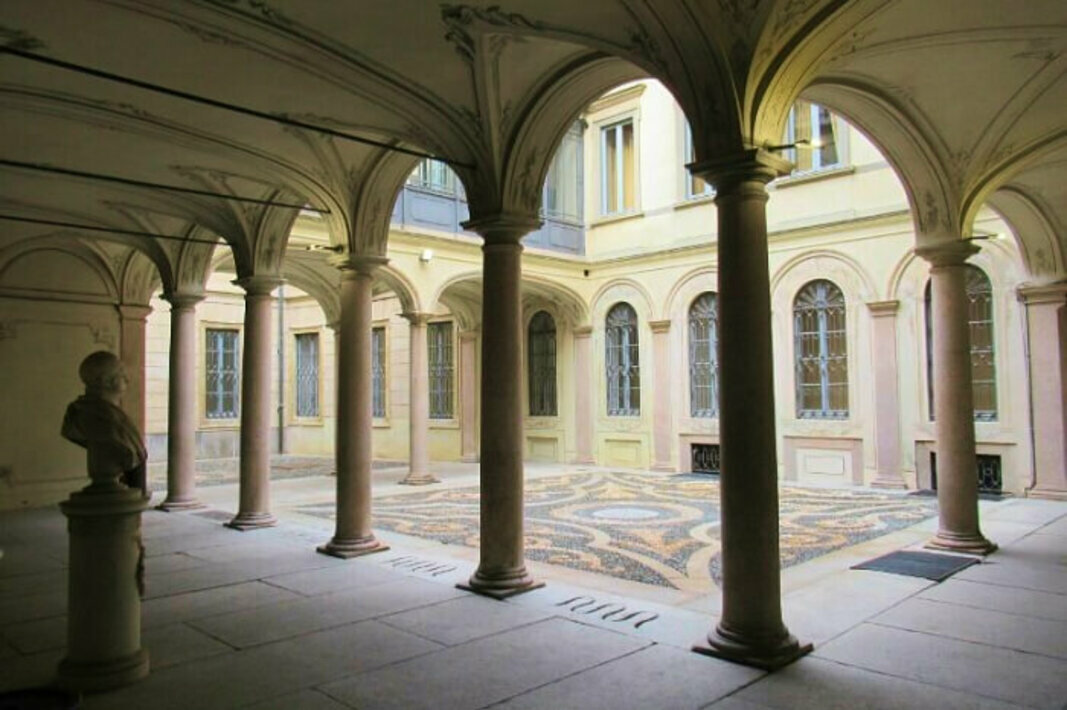
Best shopping spots in Milan
Shopping in Milan is advantageous thanks to the wide range of local and global brands, seasonal promotions at the start of summer and winter, and special discounts during fashion weeks such as Milan Fashion Week.
In malls and flagship stores you can buy fashionable, high-quality clothing and footwear; for cheaper shopping — visit the Upim department store. If you are interested in branded items from last season with hefty discounts — look for outlets (the largest outlet in Europe — Serravalle Scrivia — is 108 km from Milan). The most affordable shopping is at local markets, where replicas of fashion brands can be found (some small labels are known only to locals — look where they shop). A Milan guide would be incomplete without popular places for shopping in Milan:
- “Golden Quadrilateral”: Via Montenapoleone, Via della Spiga, Via Sant’Andrea, Via Manzoni — boutiques of Gucci, Prada, Versace, Dolce & Gabbana, etc.
- Galleria Vittorio Emanuele II — a shopping gallery with stores and cafés.
- Corso Buenos Aires — one of the largest shopping streets in Europe, offering a wide range of brands and price categories.
- Brera District (Quartiere Brera): a historic neighborhood with atmospheric streets, designer shops, galleries, and antiques.
- Porta Ticinese: an area popular with young people and fans of alternative fashion, offering many boutiques, vintage stores, and eateries.
Galleria Vittorio Emanuele II
What to see in Milan first that successfully combines shopping and sightseeing with tasty breaks? Galleria Vittorio Emanuele II, built in 1865–1877, is one of the world’s first passages with over 30 flagship boutiques of global brands like Gucci, Dolce&Gabbana, Louis Vuitton, and Prada. Here you can enjoy Michelin-starred restaurants or casual cafés like McDonalds and Zucco. The Galleria is not only a shopping center but also a Milan attraction with luxurious architecture: an interior passage crowned by a 47-meter dome combining glass and metal, marble mosaic flooring, and walls decorated with refined sculptures and frescoes.
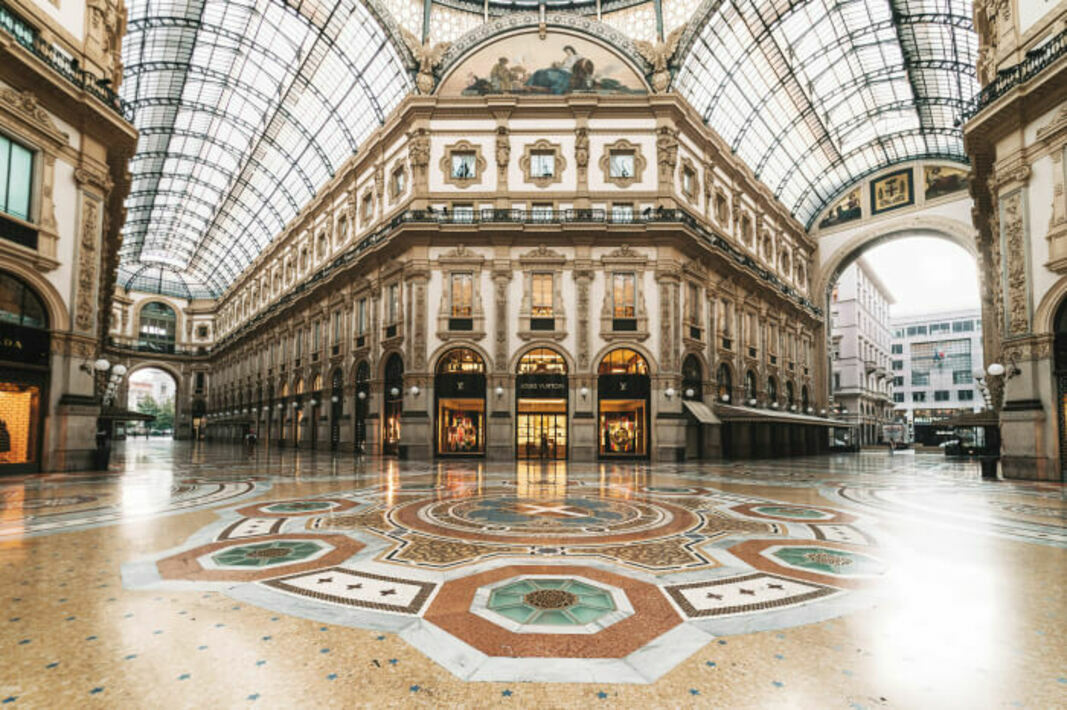
Milan — the world’s fashion capital. Design and technologies, where every step offers a chance to appreciate the richness of Italian culture and to feel new global trends. Visiting Milan is a deep dive into a world of elegance and creativity that leaves unforgettable impressions and inspires beautiful achievements.
Discover the unique atmosphere of Italian Milan! Book your tour now and immerse yourself in its amazing attractions.

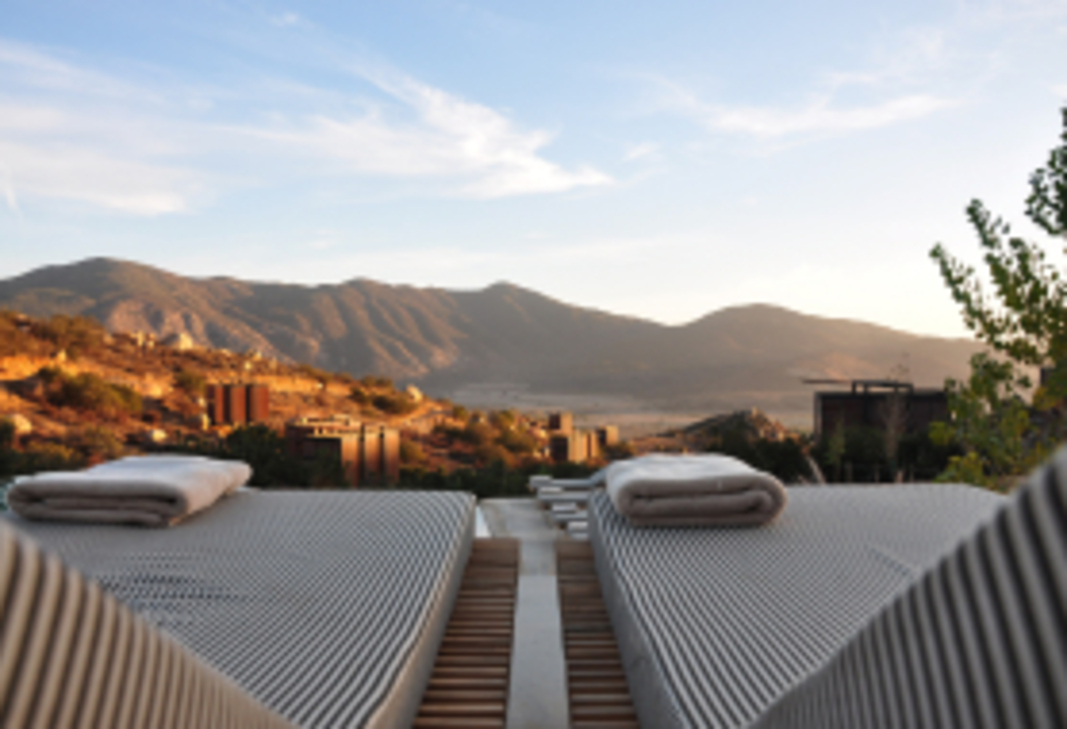
 Enter
Enter

